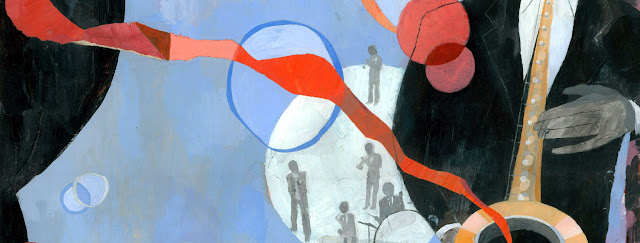Sunday, March 25 at 3pm

Sunday, March 18, 2012
Friday, March 9, 2012
Dizzy Envy
I just found this reading of DIZZY. I think Jonah Winter would approve. It has a long (and funny) intro but you may want to skip ahead to about 1:20 where the reading begins. Be sure to catch the kung fu moves at the end.
Wednesday, March 7, 2012
Much has happened in the past few months...
Qualls’s primitive-style collage illustrations strongly convey the depth of Brown’s emotions.-School Library Journal,
a SCBWI Conference talk with Selina and the Book Maker's Dozen
holiday craft fairs,
Over the Moon: The Broadway Lullaby Project-
A book/album to support the Breast Cancer Research Foundation and Young Survival Coalitions (with work from various illustrators and Broadway singers and composers),
A book/album to support the Breast Cancer Research Foundation and Young Survival Coalitions (with work from various illustrators and Broadway singers and composers),
a preview of Selina's forthcoming Brooklyn ABC book and interview for the Daily News,
MORE to come!
Monday, March 5, 2012
Another *Starred Review (BCCB) for Freedom Song
The Bulletin of the Center for Children’s Books - Freedom Song: The Story of Henry “Box” Brown; illus. by Sean Qualls. Harper/HarperCollins, 2012 32p ISBN 978-0-06-058310-1 $17.99 R* 5-8yrs Ellen Levine and Kadir Nelson’s Henry’s Freedom Box (BCCB 4/07) sets the bar high for picture books about the Virginia slave who endured pummeling confinement in a crate as he had himself shipped to New York and freedom. Walker, inspired by the discovery that Henry Brown sang for many years in a church choir, takes a more poetic but equally successful tack, imagining that rhythm and song sustained Brown throughout his years of enslaved labor and inspired him to seek his freedom when his wife and children were sold away from Virginia. Walker infuses her text and Brown’s thoughts with patterned phrasing, from the “twist, snap, pick-a-pea” work songs he sang in the fields, to the “freedom-land, family, stay-together words” that comforted him as a child, to the “stay-still, don’t move, wait-to-be-sure words” that kept him silent as he waited for release from his shipping crate. Qualls’ mixed-media illustrations, far more dreamy and stylized than Nelson’s near-photorealistic renderings, are nonetheless an excellent match for Walker’s text. Even his signature aquas and pinks, embellished with free-floating bubbles, are tempered with more sober grays, browns, and deep blues, and weighted with heavily textured brushwork. An author’s note touches on Walker’s research and what little is known of Brown’s subsequent history; also appended is the fascinating text of a letter from Brown’s accomplice in 1849, detailing Brown’s escape and cautioning the recipient, “for Heaven’s sake don’t publish this affai or allow it to be published. It would . . . prevent all others from escaping in the same way.” EB
Subscribe to:
Comments (Atom)








